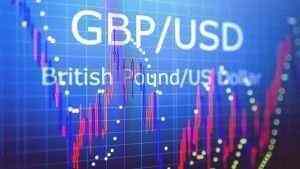

This required minimum equity, which can be a combination of cash and eligible securities, must be in your account prior to engaging in any day-trading activities. If the account falls below the $25,000 requirement, the pattern day trader won’t be permitted to day trade until the account is restored to the $25,000 minimum equity level. Day trading is not for the faint of heart as it involves minute to minute decision-making, as well as leveraged investment strategies that can lead to substantial losses. The goal of this kind of investing is to profit from daily short-term market and stock price changes. The risks involved, however, are substantially higher than longer-term investing strategies.

Still, the limited scope of resources prevents them from directly competing with institutional day traders. Institutional traders typically seek profits from arbitrage opportunities and news events. The various resources at their disposal allow them to cash in on these less risky day trades before retail traders can react. Day trading generally isn’t appropriate for someone of limited resources, limited investment or trading experience and low risk tolerance.
Day traders are known for their use of technical analysis which involves identifying support and resistance price levels and analysing price trends, volume and volatility. During a typical trading day, Zack will watch metrics such as the Relative Strength Index and the Intraday Momentum Index to evaluate whether a particular stock is oversold or undersold. He may also use stop-loss orders to exit positions quickly if the market turns against him. Day traders employ a wide variety of techniques in order to capitalize on market inefficiencies, often making many trades a day and closing positions before the trading day ends.
Who Makes a Living by Day Trading?
The most significant benefit of day trading is that positions are not affected by the possibility of negative overnight news that has the potential to impact the price of securities materially. Such news includes vital economic and earnings reports, as well as broker upgrades and downgrades that occur either before the market opens or after the market closes. Most day traders make it a rule never to hold a losing position overnight in the hope that part or all of the losses can be recouped. Finally, even a solo day trader must have a trading desk, fully equipped with the news services, real-time data, and brokerage services needed to carry out the plan.
A day trader should be prepared to lose all of the funds used for day trading. An experienced day trader’s session will start hours before the market opens or the night before. The trader will take their time to analyse price charts, investor sentiment, corporate news, macroeconomic developments and more. After the market settles, day traders spend the day scanning for market opportunities. Price action trading relies on technical analysis but does not rely on conventional indicators.
Some day traders stick to one strategy, and others use multiple strategies to make trading decisions. Remember that your investment bank may also provide tools and access to exclusive reports to aid your efforts in making timely day-trade decisions. Day traders also operate in the foreign exchange market and in the futures markets where mostly commodities are traded. Price action trading is a method of day trading where traders make decisions about trades based on price movements rather than on indicators derived from technical analysis. Technical analysis is one way to analyze potential investments to determine if or when to buy or sell.
Contrarian investing is a market timing strategy used in all trading time-frames. It assumes that financial instruments that have been rising steadily will reverse and start to fall, and vice versa. The contrarian trader buys an instrument which has been falling, or short-sells a rising one, in the expectation that the trend will change. On a candlestick chart, each candlestick indicates the open, high, low, and close price for the time frame the trader has chosen. The top or bottom of the candlestick indicates the open price, depending on whether the asset moves higher or lower during the period. Thin lines above and below the candlestick– wicks or shadows—represent the movements above and below the open and close prices.

In March 2000, this bubble burst, and many less-experienced day traders began to lose money as fast, or faster, than they had made during the buying frenzy. Unlike day trading equities, there are no minimum capital requirements for forex day trading, and you could start with as little as $100. Forex markets are open 24-hours and offer higher leverage opportunities, but that also makes them more volatile with potential for substantial losses. Its not easy to make money day trading and most day traders end up with a net loss. Its more important to find the right balance of those factors with a higher amount of capital. Many successful day traders bet less than 1% to 2% of their accounts per trade.
Life of a day trader
If you can take profits in this simulated environment over two months or longer, proceed with day trading with actual money. During the day, John will constantly monitor Apple’s intraday performance to react to unexpected market volatility and to adjust his profit-taking and stop-loss levels, according to real-time performance. Algorithmic trading involves execution of trade orders based on pre-programmed instructions based on price, time and volume of a security. Day trading involves the buying and selling of assets or financial derivatives within a single trading session. Regardless of what technique a day trader uses, they’re usually looking to trade a stock that moves . The profit potential of day trading is an oft-debated topic on Wall Street.
As you practice in your demo account, experiment with different methods to find the most suitable for your trading style, financial objectives, and risk tolerance. Indeed, many day traders will use a combination of techniques depending on market behavior and the type of asset traded. Though most don’t have access to a trading desk, today’s online brokerages often offer access to a diverse range of securities (e.g., options) and real-time analytical data.
These traders rely on a combination of price movement, chart patterns, volume, and other raw market data to gauge whether or not they should take a trade. This is seen as a «minimalist» approach to trading but is not by any means easier than any other trading methodology. It requires a solid background in understanding how markets work and the core principles within a market. However, the benefit for this methodology is that it is effective in virtually any market (stocks, foreign exchange, futures, gold, oil, etc.). Rebate trading is an equity trading style that uses ECN rebates as a primary source of profit and revenue.
Their resources allow them to capitalize on these less risky day trades before individual traders can react. Trend following, or momentum trading, is a strategy used in all trading time-frames, assumes that financial instruments which have been rising steadily will continue to rise, and vice versa with falling. Traders can profit by buying an instrument which has been rising, or short selling a falling one, in the expectation that the trend will continue.
Before you open a real trading account, consider practicing your strategies using a demo account or a trading simulator. It’s the safest and easiest way to practice your strategy without risking capital. Novice day traders should expect to practice for at least two months with profitable demo performance before transitioning into live markets. Most margin requirements are calculated based on a customer’s securities positions at the end of the trading day.
Day Trading Based on Level 2 Nasdaq Quotation
A large amount of capital is often necessary to capitalize effectively on intraday price movements, which can be in pennies or fractions of a cent. The ask prices are immediate execution prices for quick buyers while bid prices are for quick sellers . If a trade is executed at quoted prices, closing the trade immediately without queuing would always cause a loss because the bid price is always less than the ask price at any point in time. GME Short Squeeze weekly chart in 2021 where price squeezed over %1,000 in 2021 providing numerous day trading opportunities. However, for newbies, it may be better to get a sense of the market before making any moves. So, though rush hours offer the most lucrative opportunities, it’s safer for beginners to steer clear of them at first.
Many naive investors with little market experience made huge profits buying these stocks in the morning and selling them in the afternoon, at 400% margin rates. An unprecedented amount of personal investing occurred during the boom and stories of people quitting their jobs to day trade were common. Those losses could be magnified, and you could stand to lose more than your original investment if the trade is made using leverage. The best day trading stocks have high price volatility, liquidity, and trading volume.
There may not be sufficient time for a position to realize a profit before it has to be closed out. Day trading is often characterized by technical analysis and requires a high degree of self-discipline and objectivity. A trader is someone who engages in the purchase or sale of assets in any financial market, either for themself or on behalf of another party. Day traders, both institutional and individual, would argue that they play an important role in the marketplace by keeping the markets efficient and liquid. A stock can go down or up on overnight news, inflicting a bigger trading loss on the owners of shares.
Day trades can also set up a stop-loss order to manage losses or lock in profits. A stop-loss order is an offsetting order that gets you out of a trade if the stock reaches a specified price . For a buy order, a stop-loss can be placed under a recent low, and for a sell order, above a recent high. Unlike a limit order, a stop-loss order executes a market order when triggered, and its execution is guaranteed once the stop-loss price is met.